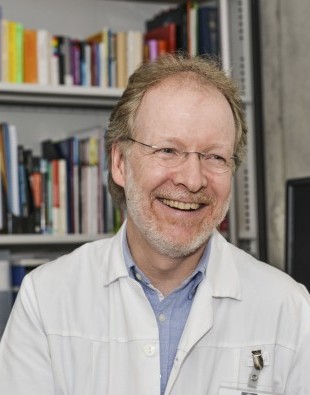
Social disadvantage leads to unequal health opportunities
Jan. 2018Equality of opportunity
Health equity. Our health system is based on the fundamental principle of openness and solidarity: it must do justice to the needs of all groups in the population, irrespective of their language, origin, social status and level of education. This means that often a special effort must be made to ensure that the disadvantaged are also provided with basic health-care as well as health promotion and prevention resources.
Promoting the equality of health opportunities and equal access to health-care ("health equity") are guiding principles of Swiss health policy. The aim is for everyone to have the same opportunities to develop, maintain and – where necessary – restore their health.
The Federal Council’s Health 2020 strategy is intended to counter illness and associated suffering through effective prevention, early detection and long-term care. Other goals of the strategy are to boost the population’s health-related skills, avoid unnecessary treatments and complications, and improve the effi ciency of the health system.
This can only be achieved if we involve all parts of the population and pay special attention to the disadvantaged. The Swiss population is heterogeneous and there are various groups that do not have easy access to our health system or to important health information. Statutory health insurance ensures that everyone has access to the health system. Yet vulnerable groups in the population often fail to make adequate or appropriate use of health-care. We are facing the challenge of improving health opportunities by creating easy access for everyone to health promotion, prevention activities and to health-care, and by narrowing the gap between the privileged and the disadvantaged.
Unequal resources, complex effects
But who are the disadvantaged, and what steps can be taken to improve their situation specifi cally? A closer look at health-equity issues inevitably takes us beyond the scope of health-care in the narrower sense. We need to consider the fundamental question of the distribution of resources, opportunities in life and available courses of action in our society: social inequality – or in other words the unequal distribution of material and immaterial resources – has a major impact on health. In the academic literature, access to resources is generally described in terms of differences in socio-economic status (i.e. differences in education, professional status and income). Social disadvantage leads to unequal health opportunities. Poorer living conditions and riskier health behaviours mean that the socially disadvantaged are often exposed to greater stresses on their health from birth.
Other factors that determine social inequality include gender identity, age, a migratory background, disability or region of residence. One or several of these factors may affect a person’s health situation and result in unequal health opportunities. However, they rarely have a direct impact on health. A higher income, for example, doesn’t automatically mean better health. Rather, these factors have a complex effect on our behaviour and lifestyle and thus on our health too.
Health risks and the disadvantaged
Not everyone in Switzerland is able to enjoy the best possible health. People with little education, a low professional status or a low income have a substantially lower life expectancy. In addition, they suffer more frequently from health problems. Socio-economically disadvantaged migrants are also particularly affected by unequal health opportunities.
The measures defi ned in the National Migration and Health Programme (2002–2017) mainly targeted migrants with a low social status, a low level of health skills and the corresponding health problems.
Studies show that their physical and mental health is often not as good as that of the native population. They are exposed to greater health risks, for example as a result of physically strenuous work or a migration history that places a psychological burden on them, and fi nd it harder to access our health system. Their knowledge about health-promoting behaviour is often inadequate and they have diffi culty in communicating with health-care providers.
From the standpoint of health and integration policy, health inequity must be considered problematic when health risks affect entire groups within the population and a better state of health cannot be achieved solely by the individual taking responsibility for a healthy lifestyle.
It is against this background that the Federal Office of Public Health has been involved in migration and health since the early 1990s. The measures defi ned in the National Migration and Health Programme (2002–2017) mainly targeted migrants with a low social status, a low level of health skills and the corresponding health problems. But the programme was also designed to improve the skills of health-care professionals in caring for migrants and provided them with appropriate tools. In addition, research was carried out to fi ll gaps in knowledge and to facilitate the implementation of specific measures.
Support for healthcare professionals
Within the context of the National Migration and Health Programme, the FOPH worked with partner organisations to develop and promote a large number of activities to improve the health of particularly vulnerable groups within the population and to support health-care personnel in caring for migrants. Today the following are available, for example:
- interpreters working in more than 50 languages (who are either present during consultations or provide telephone interpreting);
- health information in various languages (available on the migesplus.ch platform) and a platform for multilingual media cooperation (migesMedia); – online training for health-care professionals on the topic of communicating with migrants ("Interaction and quality" e-learning course);
- expertise of the Swiss Hospitals for Equity Network (centres of excellence in providing health-care to migrants)
- a network for the prevention of female genital mutilation;
- research findings such as the health monitoring of the migrant population in Switzerland, which has been carried out twice (2004 and 2010), and studies of mother-and-child health and the health situation of undocumented migrants.
Experience from some of these projects is described in this issue of spectra.
New target groups in the FOPH’s sights
The National Migration and Health Programme was concluded at the end of 2017. The main activities from this programme will be integrated into the Federal Government’s strategies and ongoing tasks. The major activities in the areas of health skills and health information will be continued. The same applies to strengthening the skills of health-care professionals in interacting with migrants and promoting of intercultural interpreting (see here). In this way, the FOPH will continue to contribute to the country’s integration policy.
The FOPH has defined the target groups that will be the focus of efforts in the coming years. In particular, these are: people affected by poverty, asylum seekers and prison inmates.
Since there are differences in health not only between native Swiss and migrants but also, and more particularly, between people with different socio-economic backgrounds, disadvantaged native Swiss will also be included in future activities. The FOPH has defi ned the target groups that will be the focus of efforts in the coming years. In particular, these are: people affected by poverty, asylum seekers and prison inmates. They were chosen on the basis of factors that, either singly or in combination, result in disadvantages in terms of health (see figure).
This figure does not show all the factors that can lead to disadvantage and to the associated health-related problems. Rather it should be understood as underlining the main focus areas of the FOPH in the coming years. Gender and age, two aspects not shown here, should also be taken into account with respect to the selected target groups. Promotion of equal opportunities is a task currently shared by various departments within the FOPH. Examples include health insurance (social compensation through reduced premiums), HIV/STI prevention and prevention of non-communicable diseases (NCD strategy), and mental health (see separate articles in this issue of spectra).
Equality of opportunities is an aspect that must always be borne in mind so that the implementation of health promotion and prevention activities can be targeted – and in order to ensure good health-care for all. Target groups who are particularly affected by health inequity must be identifi ed and the question of whether they can be reached with existing services and activities must be reviewed. If not, they must be approached with easily accessible offers (in specifi c settings). Ultimately, this strategy can also reduce the over- and underprovision of care and the provision of the wrong type of care.
Contact
Karin Gasser / Serge Houmard, Co-Heads Health Equity Section karin.gasser-GP@bag.admin.ch/ serge.houmard@bag.admin.ch




